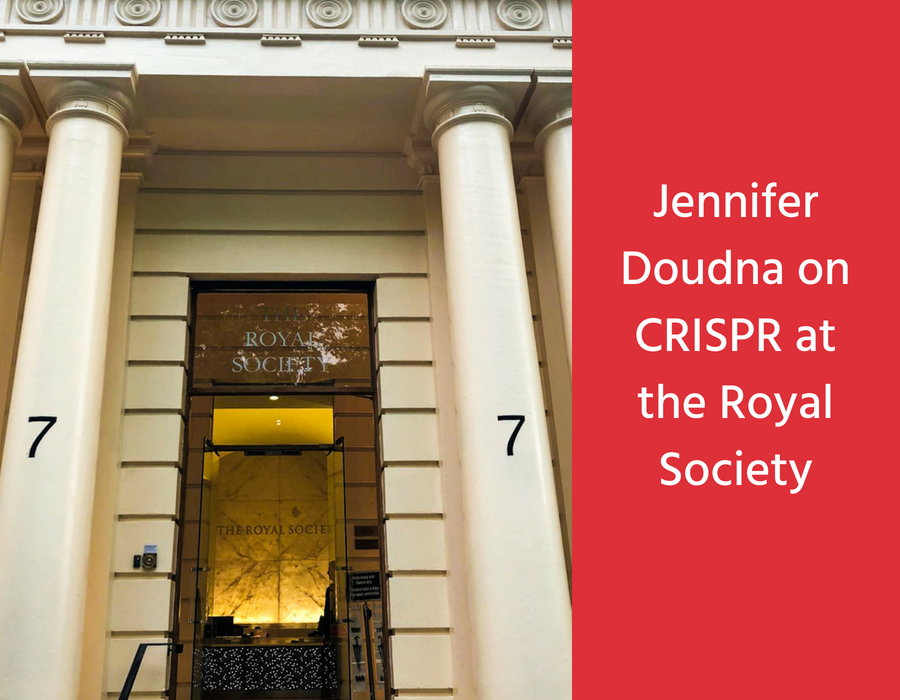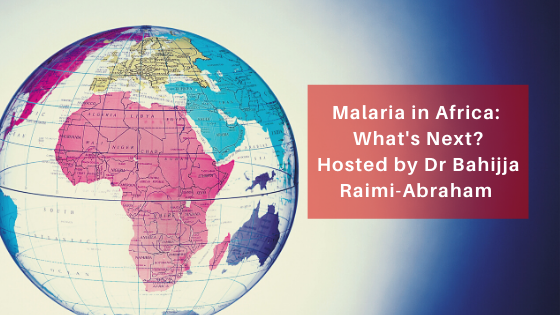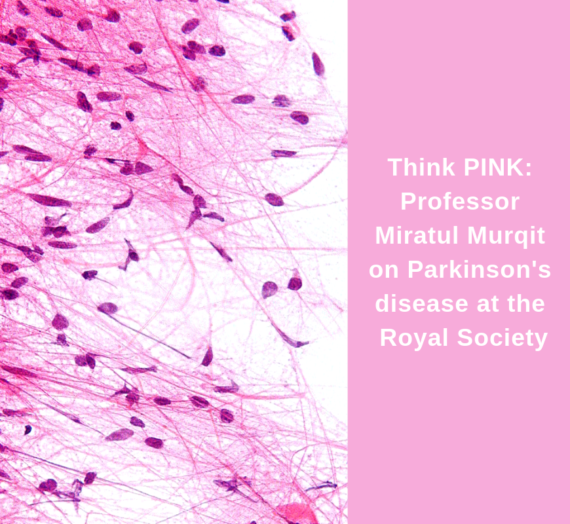Arzo Iqbal and Roisin Conneely
 Following on from our post on CRISPR-Cas9 and its applications in Huntington’s disease, on Wednesday, we attended a very interesting talk at the Royal Society given by Professor Jennifer Doudna on her research on the CRISPR-Cas9 system. Here, we give a brief summary and our thoughts on the talk.
Following on from our post on CRISPR-Cas9 and its applications in Huntington’s disease, on Wednesday, we attended a very interesting talk at the Royal Society given by Professor Jennifer Doudna on her research on the CRISPR-Cas9 system. Here, we give a brief summary and our thoughts on the talk.
Short Biography of Professor Doudna
Professor Doudna is Professor of Molecular and Cell Biology and  Professor of Chemistry at UC Berkeley. She is also the current Li Ka Shing Chancellor’s Chair in Biomedical and Health Sciences, as well as an Investigator of the Howard Hughes Medical Institute. Professor Doudna’s Lab focuses on understanding how RNA molecules control the expression of genetic information. Her recent research, alongside collaborator Emanuelle Charpentier, focused on determining the mechanism behind the RNA-guided bacterial adaptive anti-viral immunity of the CRISPR-cas9 system, enabling them to harness this technology for genome engineering in plants and animals.
Professor of Chemistry at UC Berkeley. She is also the current Li Ka Shing Chancellor’s Chair in Biomedical and Health Sciences, as well as an Investigator of the Howard Hughes Medical Institute. Professor Doudna’s Lab focuses on understanding how RNA molecules control the expression of genetic information. Her recent research, alongside collaborator Emanuelle Charpentier, focused on determining the mechanism behind the RNA-guided bacterial adaptive anti-viral immunity of the CRISPR-cas9 system, enabling them to harness this technology for genome engineering in plants and animals.
Brief Overview of the CRISPR-Cas9 system
CRISPR-Cas9 can be used to edit the genome of any organism by selectively targeting a specific sequence of DNA. What makes this system so fascinating is firstly it requires no external energy, no ATP or hydrolysis, thus making it a very efficient and quick process. Secondly, a complementary sequence of only 20 bases is required to achieve such high specificity, giving it an advantage over other genome editing tools such as TALENS and ZFNs. The video below gives a visual overview of the process.
This genome editing tool is comprised of two biological macromolecules (Cas9 protein and guide RNA), which interact, forming a complex that can identify target sequences with high selectivity.
The Cas9 protein is responsible for identifying and cleaving target sequences, and is comprised of six domains: Rec I, Rec II, Bridge Helix, PAM interacting, HNH and RuvC.

The Rec I domain is the largest and is responsible for binding guide RNA, whilst the role of Rec II is not well understood).The bridge helix is responsible for initiating cleavage activity upon binding of the target DNA sequence. The PAM interacting domain is responsible for initiating binding to target DNA (binding occurs at PAM motifs, which is two GG bases next to each other). Lastly, HNH and RuvC are nuclease domains responsible for cutting single-stranded DNA.
The guide RNA consists of a single strand of RNA that forms a T-shape, which is made up of one tetraloop and two or three stem loops. The guide RNA is engineered with a specific sequence that is complementary to the target DNA sequence and it directs where Cas9 will make a cut in the DNA.
In the absence of guide RNA, the Cas9 protein remains inactive. Upon introduction of the guide RNA to the Cas9 protein, binding will occur, inducing a conformational change, converting the inactive protein into its active form.
Upon activation of the Cas9 protein, it will begin its search for the target by binding and unbinding to DNA in rapid succession, until it locates sequences that match its PAM motif (two GG bases; The PAM in Streptococcus pyogenes is 5′-NGG-3′).
The PAM motif consists of 2 or 3 bases located downstream of the region complementary to the guide RNA. Once the Cas9 protein finds the appropriate PAM sequence, it will melt the bases upstream of PAM and pair them with the complementary region on the guide RNA; if the complementary region on the guide RNA and the target region are a match they will pair up perfectly. Consequently, the RuvC and HNH nuclease domains will cut the target DNA.
Cells will repair the damage (i.e. the cut) either by inserting other bases to stick bases together thus causing frame-shift mutations, or by matching the sequence to existing sequences and using that as a guide to repair to it. It is through this that we are essentially able to edit DNA anyway we want, making the CRISPR-Cas9 system a powerful, transformative genome editing tool with endless applications from agriculture, research to diagnostics.

For a more in depth overview of the mechanisms, check out:
https://www.ncbi.nlm.nih.gov/pubmed/22745249
http://sites.tufts.edu/crispr/crispr-mechanism/
Applications

Jennifer named five main areas that look set to benefit from CRISPR technology; research, health, therapeutics and agriculture. For example, scientists have been able to examine the wing patterns of butterflies using CRISPR to manipulate genes (more here), as well as the potential for growing “mini brains” from Neanderthal DNA to study the genes necessary for human evolution.
Professor Doudna also highlighted the work of George Church (University of Harvard), who has used CRISPR to remove viruses from pigs to make them safer potential sources of transplanted organs for human use.
Healthcare improvements are arguably the most anticipated potential outcome of CRISPR, and may allow for the targeting of disease genes, such as the huntingtin gene, which is responsible for Huntington’s disease. The field of diagnostics may also benefit from the use of gene-editing, with tools being used to detect viral infections and potentially even cancer, in a simple and fast way.
Studies have also demonstrated how CRISPR may be used in agriculture, by manipulating plant genetics to increase crop yields, for example, in Lippman’s (Cold Spring Harbor Laboratory) work on tomato yields. Jennifer also returned to this topic during the Q&A section for a discussion on GMOs, highlighting that all commercial crops are, to an extent, genetically modified, either through years of selective breeding or processes such as radiation. However, the use of CRISPR would provide a much simpler route to changing and improving crops, and arguably would be easier to control and mitigate against undesired effects of other methods of modification.
Ethics
As Professor Doudna noted, it is important to first acknowledge the different forms of gene editing when undertaking a discussion on ethics. Somatic cell editing is a method which affects the cell or organism in isolation, whereas germ cell line editing has the potential to influence subsequent generations resulting from the edited cell or organism. The potential for editing the genomes of future generations is the one which causes the most controversy, and raises the question of whether we could, or should, eventually guide our own evolution. Jennifer was reluctant to state her personal views on the topic, but emphasised the importance of an open discussion between scientists and the public.
The future of CRISPR
As mentioned at the start of the talk, the Cas family is highly diverse, and the discovery of additional Cas genes that function similarly to Cas9 holds the potential for further CRISPR systems with an even wider variety of functions.

The take home message is that the future of CRISPR requires open discussion and responsible use of the technology. One question during the Q&A raised the topic of the use of gene editing for bioterrorism, a very real possibility since CRISPR kits are relatively easy to use and readily available online. Jennifer restated that future applications rely on delivery and control of CRISPR, both at biochemical and societal levels, and finished with an inspiring thought, reminding us of the necessity of curiosity driven science to allow scientists to explore what interests them, which often, as seen in the story of CRISPR, leads to unimaginable surprises.





Top Science Stories 2018 – Seeking Science
[…] more on CRISPR in our guide here, plus our review of Jenniffer Doudna’s Royal Society talk on the […]
IWD 2019: Celebrating Women In Science – Seeking Science
[…] Self-directed evolution? Jennifer Doudna talks CRISPR at the Royal Society […]